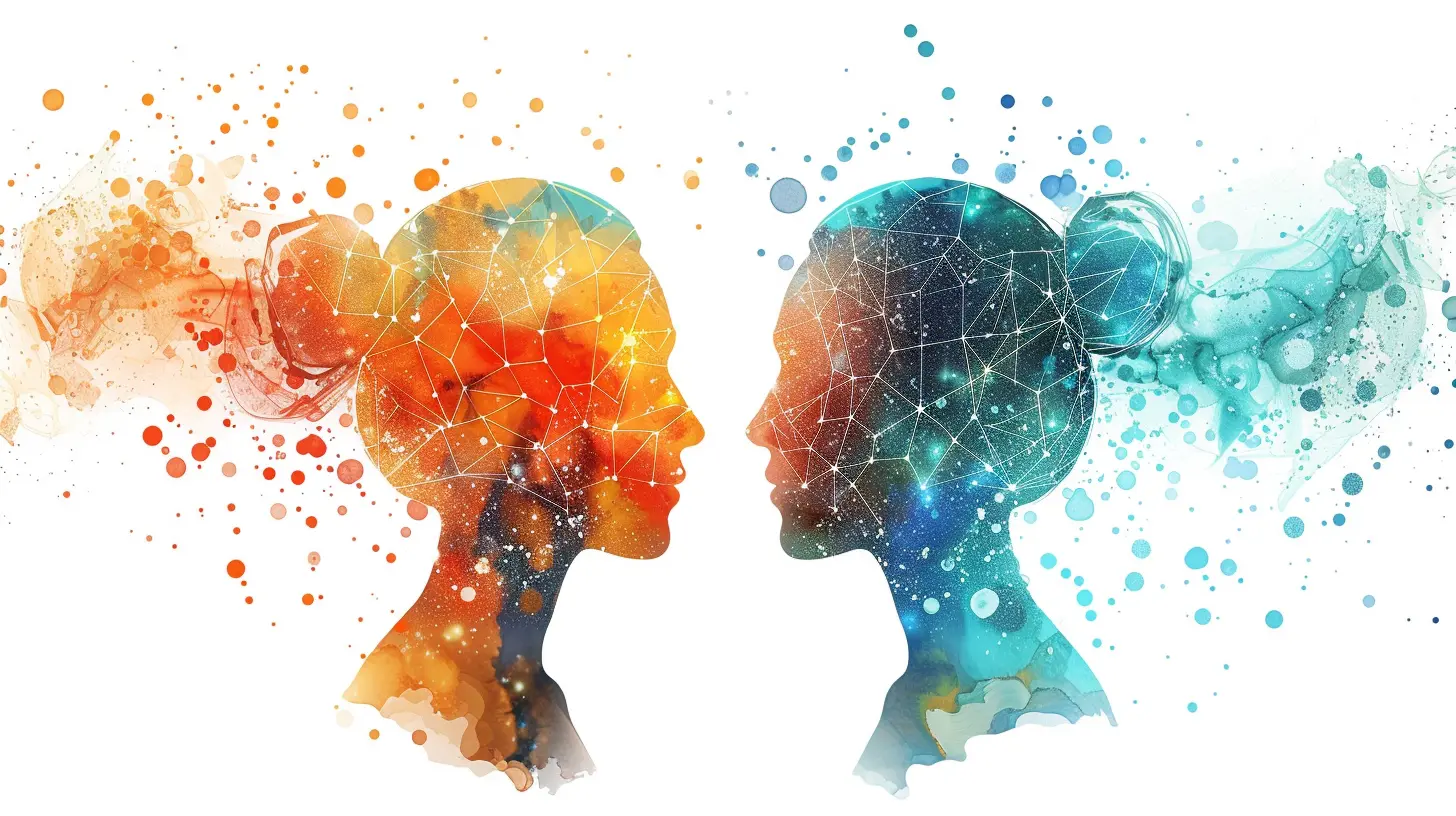The Connection Between CBT and Emotional Regulation
26 May 2025
Emotions drive our thoughts, actions, and overall well-being. But what happens when emotions become overwhelming or unpredictable? This is where Cognitive Behavioral Therapy (CBT) steps in, offering practical tools to regulate emotions and regain control over our inner world.
CBT is one of the most effective psychological treatments, especially when it comes to emotional regulation. But how exactly do they connect? Let’s break it down.

What Is Emotional Regulation?
Emotional regulation is the ability to manage emotions effectively—not suppressing them but understanding, processing, and responding to them in healthy ways. Whether it’s calming yourself when you're anxious or expressing anger without aggression, emotional regulation plays a key role in mental well-being.When emotional regulation is off balance, everyday situations can feel overwhelming. Small frustrations may lead to outbursts, sadness may linger longer than necessary, and stress may become paralyzing. People struggling with emotional dysregulation often experience mood swings, anxiety, depression, or impulsive behaviors.
But here’s the good news—emotional regulation is a skill, and just like any skill, it can be learned and improved. This is where CBT steps in.

What Is Cognitive Behavioral Therapy (CBT)?
CBT is a structured, goal-oriented therapy that helps people change negative thought patterns and behaviors. It's based on the idea that our thoughts, feelings, and behaviors are interconnected. By changing the way we think, we can change the way we feel and act.CBT is widely used to treat conditions such as:
- Anxiety disorders
- Depression
- Post-traumatic stress disorder (PTSD)
- Obsessive-compulsive disorder (OCD)
- Emotional dysregulation in borderline personality disorder (BPD)
It's a practical and evidence-based approach that teaches individuals to identify and challenge unhelpful thoughts, leading to better emotional control.

How CBT Helps with Emotional Regulation
So, how does CBT actually help with emotional regulation? Here are some key ways:1. Identifying Negative Thought Patterns
The first step in emotional regulation is awareness. Many times, our emotions spiral out of control because we don’t recognize the triggers. CBT helps individuals track their thoughts and emotions and identify harmful thinking patterns.For example, if someone constantly thinks, “I’m a failure,” they may experience sadness and low motivation. CBT helps break these cycles by challenging these negative beliefs and replacing them with more balanced and realistic thoughts.
Example: Instead of thinking, “I always mess things up,” CBT encourages reframing thoughts to “I made a mistake, but I can learn from it and improve.”
2. Reframing Negative Thoughts
Our perception of an event shapes how we feel about it. CBT teaches cognitive restructuring, a technique that challenges and replaces irrational thoughts with healthier ones.Let’s say you’re stuck in traffic and immediately think, “This is ruining my day!” That thought fuels frustration. CBT would encourage you to reframe that thought to something like, “Traffic is annoying, but I can use this time to listen to my favorite podcast.”
By changing the narrative, our emotional response shifts too. This is key in emotional regulation!
3. Practicing Mindfulness and Self-Awareness
CBT often incorporates mindfulness techniques, helping individuals become more aware of their thoughts and emotions without judgment.Mindfulness encourages pausing before reacting, which allows for better emotional control. Instead of acting on impulse, a person learns to observe their emotions, process them, and respond thoughtfully.
4. Developing Healthy Coping Strategies
CBT emphasizes healthy coping skills for dealing with strong emotions. Instead of turning to unhealthy habits like avoidance, aggression, or substance use, CBT teaches alternative strategies such as:- Deep breathing exercises to reduce anxiety
- Journaling thoughts and emotions for self-reflection
- Engaging in physical movement like walking or yoga
- Practicing self-compassion and replacing self-criticism with kindness
These techniques help regulate emotions by reducing emotional intensity and promoting emotional balance.
5. Breaking the Cycle of Emotional Reactivity
When emotions take over, it’s easy to react impulsively. CBT trains individuals to pause before reacting, assess the situation, and make intentional choices.Let’s say someone cuts you off in traffic. Instead of immediately getting angry and shouting, CBT encourages you to:
1. Take a deep breath
2. Recognize the automatic negative thought (“That person is so rude!”)
3. Reframe it (“Maybe they’re rushing to an emergency”)
4. Choose a calm response (Simply let it go and continue driving safely)
This simple shift in thinking can prevent stress, anger, and frustration, ultimately improving emotional regulation.

CBT Techniques for Strengthening Emotional Regulation
There are several CBT exercises that specifically strengthen emotional regulation skills:1. Thought Records
A thought record is a tool that helps people analyze their thoughts, emotions, and behaviors. It involves writing down:- The triggering situation
- Your automatic thoughts
- Emotions felt
- Alternative, more balanced thoughts
- The new emotional response after reframing the thought
This technique teaches self-awareness, helping individuals challenge negative patterns in real time.
2. The STOP Technique
The STOP technique is a simple but effective CBT exercise for emotional regulation:- S – Stop and pause before reacting
- T – Take a deep breath
- O – Observe your thoughts and feelings without judgment
- P – Proceed with a mindful response
This method prevents impulsive reactions and encourages thoughtful decisions.
3. Behavioral Activation
When emotions are low, motivation tends to disappear. Behavioral activation, a core CBT technique, helps individuals regain motivation by scheduling small, enjoyable activities that boost mood and energy.For instance, if someone feels sad, engaging in simple activities like taking a nature walk, painting, or playing music can shift their emotional state.
4. Progressive Muscle Relaxation (PMR)
PMR is a relaxation technique used in CBT to physically release stress and tension, promoting emotional balance. It involves tensing and relaxing each muscle group, creating a sense of calm and stability.5. Gratitude Journaling
Writing down three things you’re grateful for each day can rewire the brain to focus on positive emotions. It’s a simple yet powerful tool to regulate emotions and shift towards a more optimistic mindset.The Long-Term Benefits of CBT for Emotional Regulation
Practicing CBT for emotional regulation has lasting effects. Over time, individuals become more resilient, self-aware, and emotionally balanced. Some long-term benefits include:- Reduced stress and anxiety
- Improved emotional stability
- Better relationships and communication
- Increased self-confidence
- Enhanced problem-solving skills
CBT isn’t just about temporary relief; it builds lifelong emotional intelligence.
Final Thoughts
Emotional regulation is essential for a healthy and happy life, but it isn’t always easy. CBT offers a powerful toolbox for gaining control over thoughts and emotions, reducing distress, and improving overall well-being.By practicing cognitive restructuring, mindfulness, and healthy coping strategies, individuals can develop emotional resilience and navigate life’s challenges with greater ease and confidence.
So, the next time your emotions feel overwhelming, remember—you have the power to change your thoughts, and in turn, transform how you feel. With CBT, emotional control is always within reach.
all images in this post were generated using AI tools
Category:
Cognitive Behavioral TherapyAuthor:

Matilda Whitley
Discussion
rate this article
2 comments
Lucy McAllister
Empower your mind: CBT transforms emotions into strength!
June 3, 2025 at 3:58 AM

Matilda Whitley
Thank you! CBT indeed empowers individuals by transforming negative emotions into positive strength, enhancing emotional regulation.
Theodore Snow
Thank you for this insightful article! It effectively highlights how CBT can enhance emotional regulation, offering valuable strategies for those seeking to improve their mental well-being. Great read!
May 29, 2025 at 2:37 PM

Matilda Whitley
Thank you for your kind words! I'm glad you found the article helpful in understanding the connection between CBT and emotional regulation.


